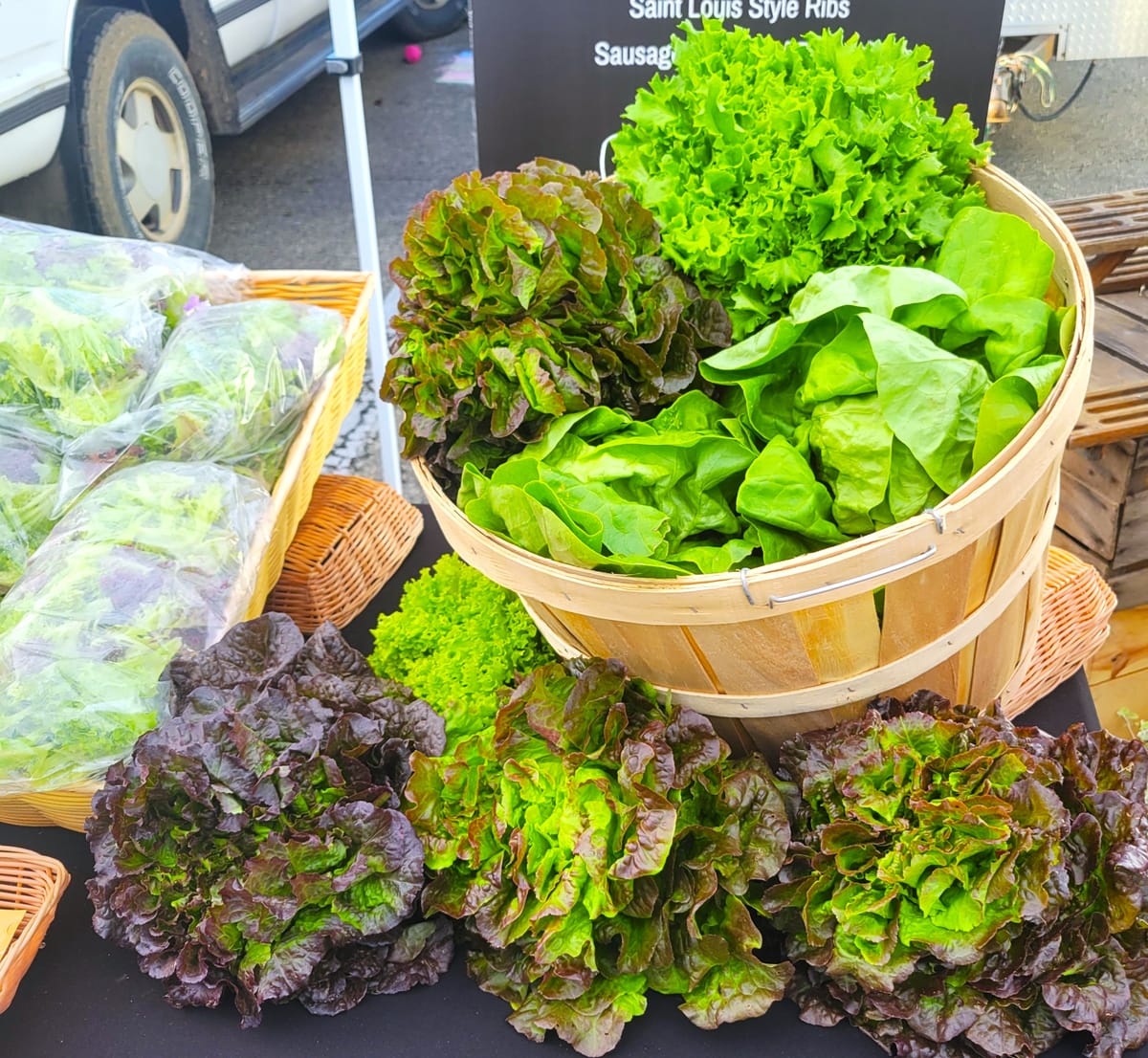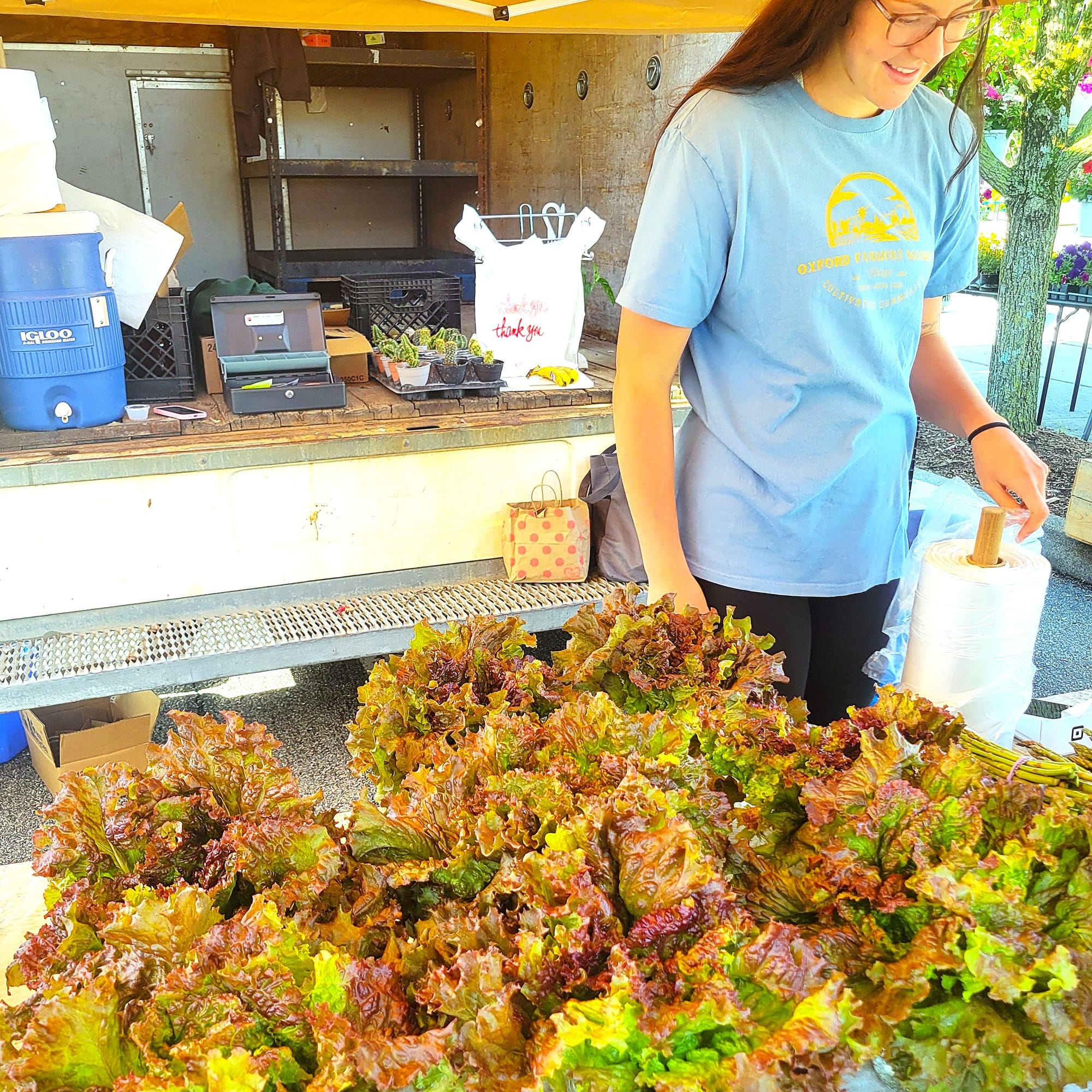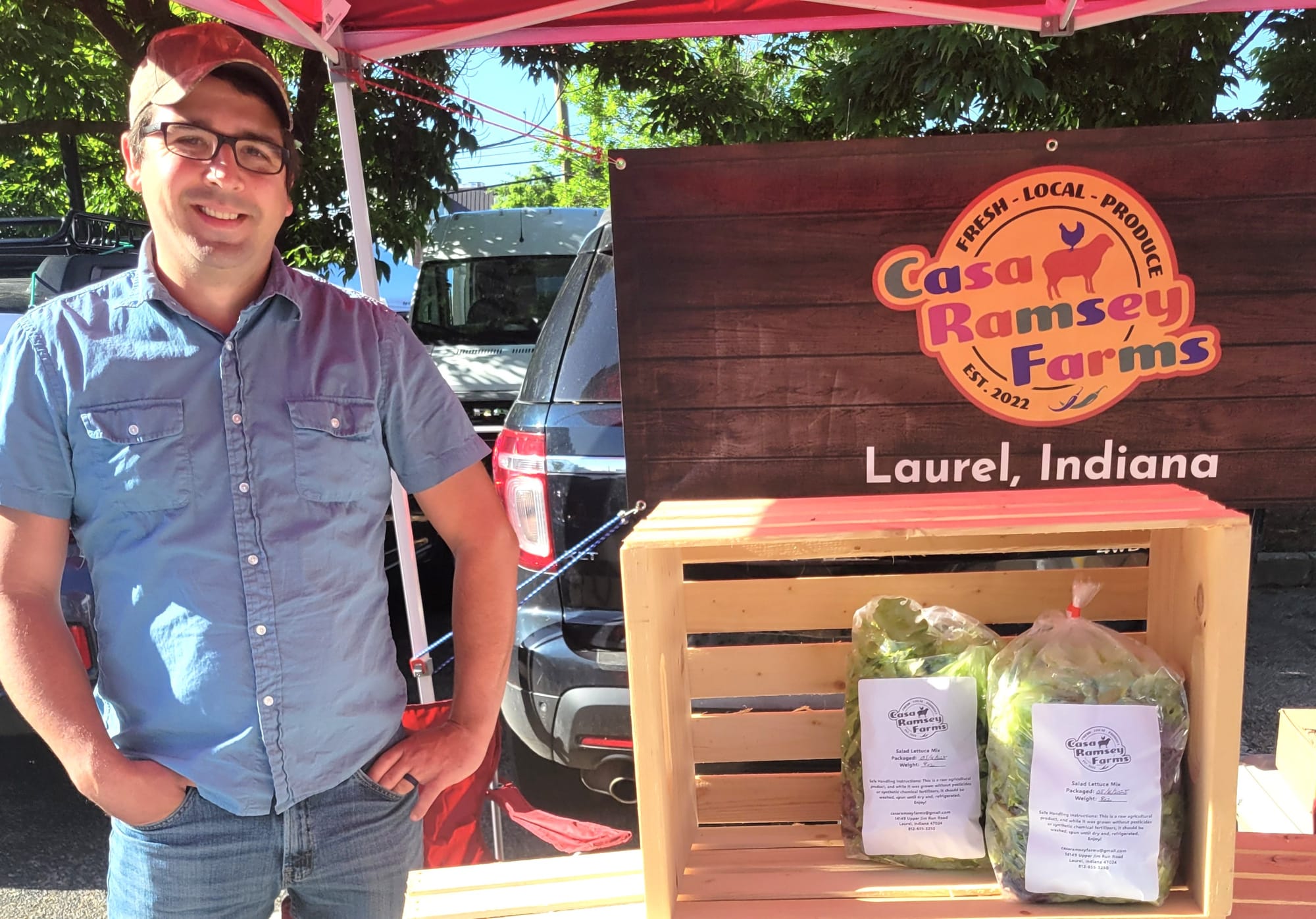On My Plate: Lettuce
Local lettuce heads at the Oxford Farmers Market are more nutritious and last longer than supermarket lettuce

Lettuce plays at best a supporting role at the salad bar, forming a base hidden under meats and veggies. But this time of year, as local produce is just beginning to appear at the Oxford Farmers Market and MOON Co-op Grocery, local lettuce is the glamorous star of the show, even outshining the early cut flowers at the market.
The handsome local lettuce heads on display at the farmers market are bright green and purple, with leaves opening up broadly like a welcoming face. This is not merely cosmetic. Jo Robinson’s “Eating on the Wild Side” explains that a head of lettuce with a dark intense color and loose open leaves is more nutritious than a pale green densely packed variety like iceberg lettuce. According to Robinson, an interior iceberg leaf has only 1% of the antioxidants of a leaf exposed to the sun.
We have local lettuce this early in the growing season from several growers. Jennifer Bayne’s 7 Wonders Farm has been able to maintain harvesting of some lettuce through the winter, thanks to hoop houses protecting the beds. When the heads aren’t substantial enough to display individually, a variety of leaves are packed in bags. In recent weeks, Downing Fruit Farm has also offered heads of lettuce.

A newcomer to the Oxford Farmers Market this year is Casa Ramsey Farms, located five miles west of Brookville Lake. The Ramseys started the farm a couple years ago and practice organic principles, including using no pesticides, synthetic chemical fertilizers or sprays. Still, you should wash local lettuce. Though our local growers employ safe practices and avoid chemicals, they are personally harvesting our local lettuce, and the soil gets on their hands.

Local lettuce stays fresh much longer than supermarket lettuce, which is handicapped by lengthy storage and travel time to Ohio from California fields. Supermarket lettuce holds up for just a few days, while local lettuce stays fresh for several weeks. The shelf life of our local lettuce, though, does vary. Bags of cut leaves will last for a week or so, whereas crisp heads can stay fresh for several weeks, though I don’t know about the nutrition of month-old lettuce. And the intensely nutritious dark red varieties wilt before the green varieties, so if you buy a mixed bag, consume the red leaves first.
I’ve been asked a number of times for a salad dressing recipe. My personal recommendation is to mix one part sunflower oil, one part vinegar, one part water and two parts olive oil. Add a dash of mustard, basil, garlic and pepper, then shake thoroughly.
For olive oil, I use Kofinas, made locally by Evie Semertzides, and available at the farmers market and MOON Co-op. Kofinas olive oil, made from olives gathered on Semertzides’ family’s estate in Crete, Greece before being bottled and flavored here, taste more like olives than the large national brands.
My vinegar of choice is Zafiropoulos, also available from Evie at the farmers market and MOON Co-op. It’s balsamic vinegar with pomegranate, made in a village near Athens, Greece. The vinegar label is almost entirely in Greek, and the website doesn’t have much in English, either. National balsamic brands tend to be too strong, overwhelming the olive oil and lettuce. In contrast, Zafiropoulos is full-flavored yet mild, the perfect match for our local lettuce.
At dinner, we like to eat our lettuce salad after the main course. I got the habit from my parents: More nutritious and less caloric than a sugary dessert.
James Rubenstein is president of the Board of Directors for the Oxford Free Press and professor emeritus of geography at Miami University.




